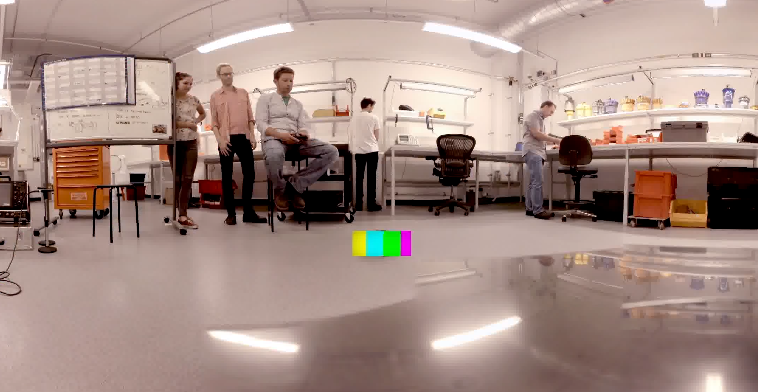
Robohub.org
Has Dyson’s robotic dream become a reality?

Has Dyson finally cracked its 16-year mission to create a robot vacuum cleaner? The company’s teaser video hints at a new release which looks a lot like a rival for the best-selling Roomba, and perfectly illustrates how fast the conditions necessary to create viable robotic products are evolving.
Dyson’s mysterious video, posted on YouTube (below), heralds a 4 September release. The only piece of information to accompany it reads: ‘16 years. 200 engineers. £28 million investment. The result? Tell us what you think it is.’
The device moves around a bit and zooms in and out—interesting, but not as interesting as the glimpse of what looks like its location-analysis technology. It hints at a number of other interesting features too.
What’s certain is that, with one of the best-known brand names around, Dyson has done its research before going public in a market as hot as robotics is right now.
Earlier this year, the company invested £5m in a lab at Imperial College London designed to help robots ‘understand and adapt to the world around them,’ Then, in an interview in February, company founder Sir James Dyson (pictured) suggested a robotic cleaner might be in the pipeline and would use computer vision to navigate a room.
Imperial’s Professor Davison has also spoken about the importance of location tracking: “We will research and develop systems that allow machines to both understand and perceive their surroundings – using vision to achieve it,” he said. “A truly intelligent domestic robot needs to complete complex everyday tasks while adapting to a constantly changing environment.”
Dyson is also planning a £250m expansion of one of its UK sites, at Malmesbury, which could provide up to 3,000 new jobs.
Prime time for consumer robotics
More than anything, Dyson’s upcoming launch proves that consumer robotics is finally ready for prime time. In a great up-sum of why, published on TechCrunch, computer scientists Rudina Seseri and Wan Li Zhu, who both work for VC ’s Fairhaven Capital, explain why the conditions now are perfect.
“In recent years,” they say, “we have seen accelerated levels of innovation in both software and hardware that are now driving new possibilities for consumer readiness and adoption of personal robotics.”
This as happened on a number of levels:
Proliferation of devices, compute, and bandwidth. Instead of requiring expensive custom onboard computing, robots are now able to leverage hardware, smartphones and cloud computing for processing and storage. This has implications on both cost and availability of data for machine perception and learning.
Progress in natural language processing, speech, vision and machine learning – a self-reinforcing loop: As machines can better understand the real world, they learn at a faster rate.
API-fication of online services. The ability for machines to tap into multiple online data sources and services allows them to quickly stitch together value, reducing time and cost to go to market. Location-based data, financial and weather, and increasingly healthcare data are all examples.
They and many others active in the field, also believe that the robotics future won’t look much like the current mass-visage of the technology and that, instead, “artificially intelligent devices will take on a multitude of forms where the form factor will more closely match its functions and use case.”
Many more will be in the form of embedded intelligence within everyday systems we are already familiar with. And soft robotics further promises to open up the number of applications the technology will have.
The key, according to Suseri and Zhu, is market acceptance, which will be driven by reliability and safety. In lieu of this, the technology’s advance will progress slowly, with interim solutions to pave the way. Cars are in the front line, with incremental modifications such as the sensory-enabled brakes already in the market.
With a product launch that has many in the industry on the edge of their seats, Dyson is positioning for a leading part in the coming automation of the home and a major slice of the ripening consumer robotics market. It’s also an opportunity for a major UK-based company to show some robot muscle.
http://youtu.be/L6ReNFlxqJc
This article was originally published on RAS SIG – the Robotics and Autonomous Systems Special Interest Group – part of Innovate UK’s Knowledge Transfer Network.
If you liked this article, you may also be interested in:
- Why is Japan the first to get Dyson’s new 360 Eye?
- Recent robotic vacuum launches change industry from niche to mainstream
- Housework 2.0: The battle of the robot vacuum cleaners begins!
- Dyson launches new robotic vacuum cleaner
- Dyson invests £5m in robot lab
See all the latest robotics news on Robohub, or sign up for our weekly newsletter.
tags: c-Consumer-Household, Dyson




